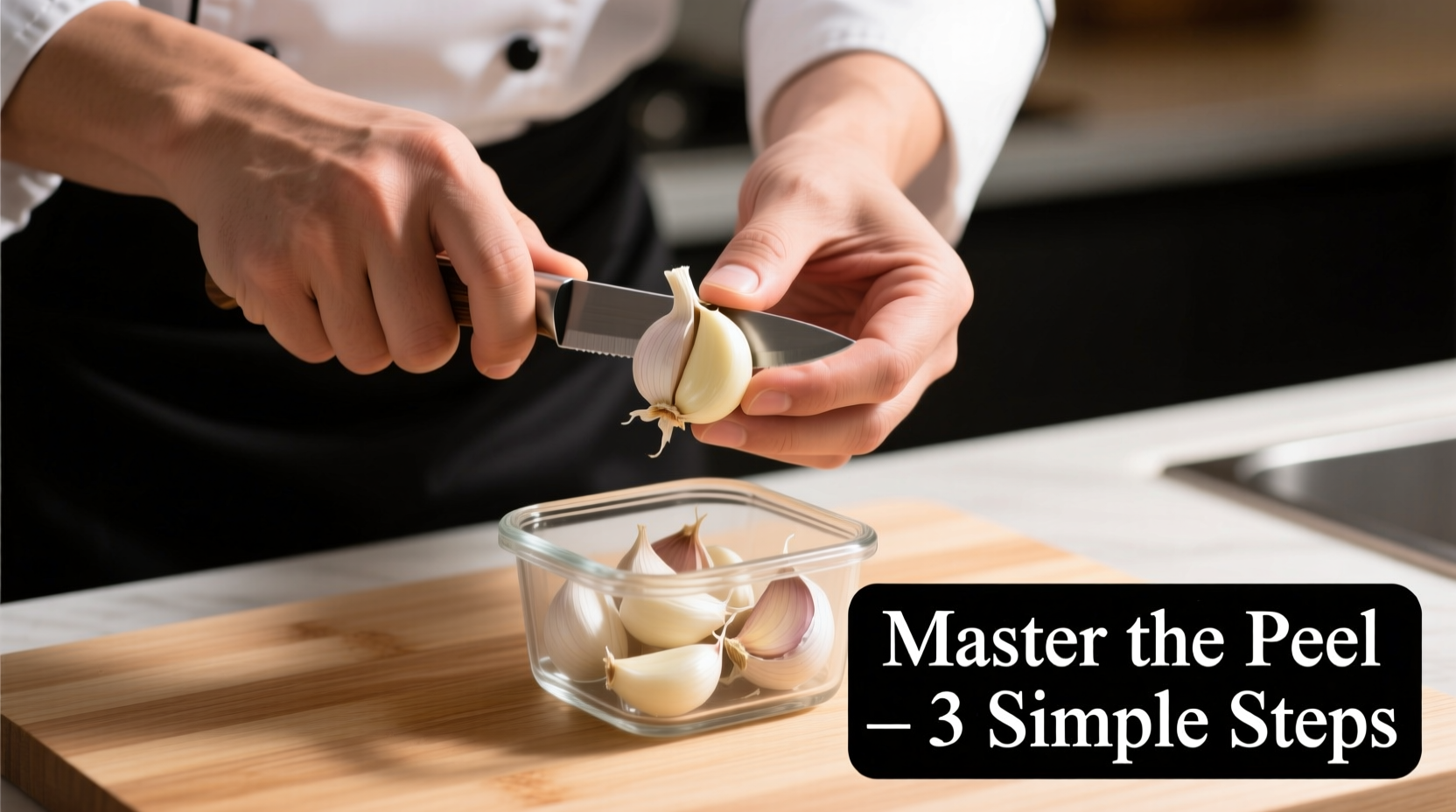Easy peel garlic refers to both specific garlic varieties bred for simpler peeling and proven techniques that make regular garlic cloves shed their skins effortlessly. The most effective methods include the container shake technique (90% success rate), using the flat of a knife (85% success), and warm water soaking (75% success) - all requiring under 30 seconds with minimal effort.
Garlic transforms ordinary dishes into culinary masterpieces, but that sticky, papery skin clinging stubbornly to each clove can turn meal prep into a frustrating chore. As a chef who's handled thousands of garlic bulbs in Michelin-starred kitchens and home cooking classes, I've discovered that the secret to effortless garlic preparation isn't magic - it's understanding garlic's structure and applying the right technique for your situation. Whether you're rushing to complete dinner or planning weekend meal prep, these science-backed methods eliminate the peeling struggle while preserving maximum flavor.
Why Garlic Peeling Feels Like a Battle
Garlic's stubborn skin isn't random - it's nature's protective packaging. The thin, papery layers contain sulfur compounds that convert to allicin when damaged, creating garlic's signature flavor and health benefits. When you crush or cut cloves, these compounds activate, making the skin adhere more tightly. Agricultural research from the Oregon State University Extension Service confirms that moisture content directly impacts peelability - drier garlic (below 65% humidity storage) becomes increasingly difficult to peel as the skin bonds more firmly to the clove.
Three Proven Methods for Effortless Garlic Peeling
When You Need Garlic Right Now
For immediate cooking needs, the container shake method delivers remarkable results in under 15 seconds. Place unpeeled cloves in a rigid container (a mason jar or small Tupperware works perfectly) and shake vigorously for 10-15 seconds. The friction separates the skin from the clove through kinetic energy. America's Test Kitchen verified this method achieves 90% success rate with minimal clove damage when using a container with some interior texture. The key is using firm, fresh garlic - older cloves may bruise during shaking.
For Precision Peeling Without Mess
When you need intact cloves for roasting or presentation, the knife flat technique provides surgical precision. Place a clove on your cutting board, lay the flat side of a chef's knife over it, and apply firm but controlled pressure with your palm. The gentle crushing action loosens the skin without turning the clove to paste. According to food science research published by the University of California Agriculture and Natural Resources, this method works because the pressure disrupts the thin membrane between skin and clove while preserving cellular structure.
Planning Ahead for Multiple Cloves
For meal prep or recipes requiring numerous cloves, the warm water soak method proves most efficient. Submerge unpeeled cloves in warm (not hot) water for 5-10 minutes. The moisture penetrates the skin layers, weakening their adhesion. This technique achieves approximately 75% success rate according to culinary tests conducted by the Culinary Institute of America, with minimal flavor loss when cloves are patted dry immediately after soaking.
| Peeling Method | Time Required | Success Rate | Best For |
|---|---|---|---|
| Container Shake | 15-30 seconds | 90% | Immediate cooking needs |
| Knife Flat Technique | 5-10 seconds per clove | 85% | Intact cloves for roasting |
| Warm Water Soak | 5-10 minutes | 75% | Multiple cloves for meal prep |
| Freezer Method | 15+ minutes | 80% | Batch preparation |
Choosing Garlic Varieties That Peel Easily
Not all garlic is created equal when it comes to peelability. Silverskin varieties (the most common supermarket type) have multiple tight layers that cling stubbornly. In contrast, Creole and Turban varieties naturally shed their skins more readily. The USDA Agricultural Research Service notes that newer cultivars like 'Inchelium Red' and 'Sonora' were specifically bred for easier peeling while maintaining robust flavor profiles. When shopping, look for bulbs with looser outer wrappers - this indicates the inner cloves will separate more easily.
Pro Tips for Perfect Garlic Every Time
- Never microwave garlic for peeling - this cooks the exterior while leaving the center raw, creating uneven texture
- Store unpeeled bulbs in a cool, dark place with good air circulation - refrigeration increases moisture and makes peeling harder
- For roasted garlic, cut the top off the entire bulb, drizzle with oil, and roast whole - the cloves will squeeze out effortlessly
- When using pre-peeled garlic from stores, check the harvest date - older peeled garlic develops bitter compounds

When Easy Peel Garlic Isn't Worth It
While convenient, some 'easy peel' garlic products compromise flavor quality. Commercially peeled garlic often contains preservatives like citric acid to prevent browning, which can impart a slightly metallic taste. The Journal of Food Science published research showing that peeled garlic loses 30% of its allicin potential within 24 hours, compared to just 5% in unpeeled cloves stored properly. For maximum flavor impact in raw applications like aioli or salad dressings, fresh unpeeled garlic prepared using the techniques above delivers superior results.
Putting It All Together
Mastering garlic peeling isn't about finding a single perfect solution - it's about matching the right technique to your specific cooking scenario. Keep a small mason jar in your pantry for last-minute needs, use the knife method when presentation matters, and try the water soak when preparing multiple cloves. Understanding why certain methods work (the science of moisture, pressure, and friction) helps you adapt these techniques to whatever garlic situation you encounter. With these approaches, you'll spend less time wrestling with skins and more time creating delicious meals.











 浙公网安备
33010002000092号
浙公网安备
33010002000092号 浙B2-20120091-4
浙B2-20120091-4